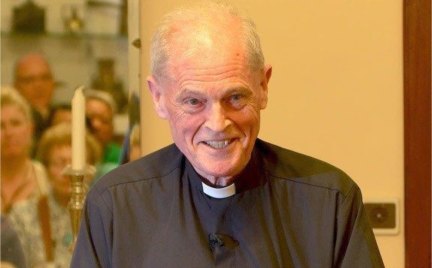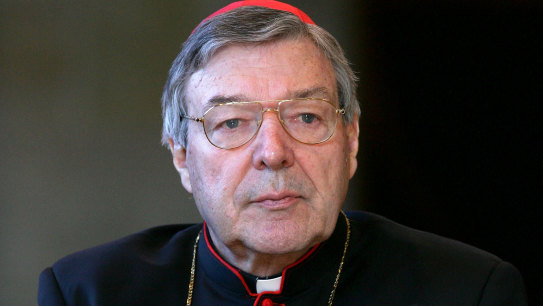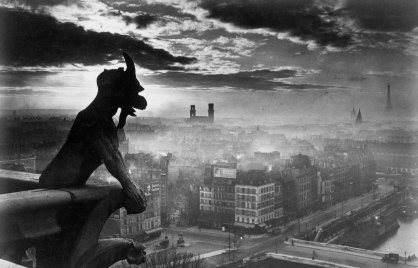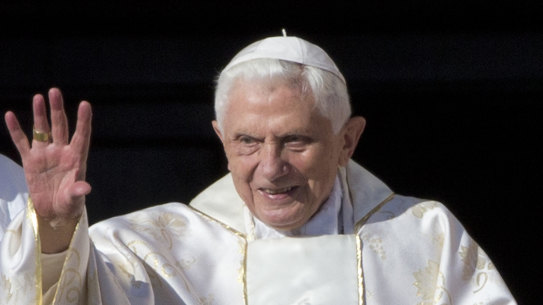Exorcist warned of the dangers of yoga, acupuncture and horoscopes
Father Jeremy Davies, who has died aged 87, was a Catholic priest appointed Exorcist of the Archdiocese of Westminster by Cardinal Basil Hume in 1986. In 1993, with Father Gabriele Amorth, Chief Exorcist of the Vatican, he established the International Association of Exorcists, which now boasts several hundred members.
To secular-minded folk the ritualistic expulsion of demons, from a person (or place) believed to be “possessed”, seems bizarre. Demonic possession is not a diagnosis recognised by psychiatric or medical authorities, and critics suggest that it is wrong and potentially dangerous to ascribe to “possession” symptoms associated with physical or mental illnesses – such as the tics of Tourette’s syndrome, for example.
While the practice of exorcism is part of the belief system of many cultures and religions, mainstream churches have updated their practices to accommodate such concerns. In 2000 the Vatican issued De Exorcismis et Supplicationibus Quibusdam (“On exorcisms and certain supplications”), a new manual for exorcism rituals, replacing the version in use since 1614. This included for the first time a warning to priests to take care not to mistake psychiatric illness for demonic possession, encouraging them to work with the medical profession to distinguish between the two, and to spend more time in prayer with possessed people.
Davies had been a doctor before taking Holy Orders, and during time spent in Africa had been struck by the fact that many people there tended to attribute disturbed behaviour to spiritual causes – needing spiritual solutions. In the West, on the other hand, he felt there was a tendency to mistake the spiritual for the psychological.
The issue of exorcism remains a sensitive one in the Catholic Church – some priests believing the rite to be out of step with modern beliefs. When in 2008 the Catholic Truth Society published Davies’s Exorcism: Understanding Exorcism in Scripture and Practice, there was dismay in some quarters at its uncompromising adherence to traditional Church teaching on sexual matters.
RELATED ARTICLE
Davies contended that “perversions” including pornography and promiscuity were contributing to a rise in the problem of demonic possession. “[Sexual] intercourse, which belongs in the sanctuary of married love, can become a pathway not only for disease but also for evil spirits.”
And the problem, according to Davies, was not confined to sexual behaviour: “The thin end of the wedge (soft drugs, yoga for relaxation, horoscopes just for fun and so on) is more dangerous than the thick end because it is more deceptive – an evil spirit tries to make his entry as unobtrusively as possible.
“Beware of any claim to mediate beneficial energies (e.g. reiki), any courses that promise the peace that Christ promises (e.g. enneagrams), any alternative therapy with its roots in eastern religion (e.g. acupuncture).”
In an article in The Guardian published after Father Davies’s death, a nephew, Nick Davies, who described himself as an “atheist, yoga-loving former Guardian reporter” recounted how, due to an ancient breach in their family, he had first met his uncle only in March 2020.
Although he regarded his uncle’s views on the role of the Devil in daily life as “variously horrible… and absurd”, he found him to be a man “unusually gentle in speech and manner”.
As the priest told his nephew about his life, “… I began to see glimpses of the world through his eyes, living with the certainty that a malevolent force of almost unlimited power was ruining vulnerable humans. And he – armed only with his crucifix and his god – challenged that force. In its face. Every day. In spite of its terrifying power. He was a very brave man, wasn’t he?… At the end we shook hands with real affection.”
Jeremy Ponsonby Meredyth Davies was born on March 25, 1935 in Wimbledon, south-west London, the son of Idris Davies, a garage proprietor who served in RAF Fighter Command during the war, and Elizabeth (née Ponsonby). His father had been married before but had abandoned his first wife and children. His mother would die in a plane crash when her son was 18.
Jeremy was educated at King’s School, Canterbury, and read English Literature at St Edmund Hall, Oxford, where he also excelled at rugby and tennis. There followed unsatisfactory stints working at an advertising agency, then as an air steward, before, in 1961, he enrolled as a medical student at St Bartholomew’s Hospital.
During this time, encouraged by an Oxford friend who had converted, he felt drawn to Roman Catholicism, and in 1966 was received into the Church at St Charles Borromeo, Ogle Street, London. After qualifying as a doctor in 1967 he spent time working as a doctor at mission stations in Guyana, Nigeria and Ghana, then as a house surgeon at Redhill General Hospital, Surrey.
But he felt an increasingly strong call to Holy Orders and was accepted as a student for the Diocese of Westminster by Cardinal John Heenan.
In 1970 he was sent to the Pontifical Beda College in Rome, where the Rector described him as “an outstanding person and excellent in all respects”, noting that he took “a strict line in all things” and hoping that as a priest, he would temper his strictness “to the suitable requirements of persons and occasions”.
In 1974 Davies was appointed a chaplain at Westminster Cathedral. He served as assistant priest at St Mary’s, Cadogan Street, Chelsea, from 1977 to 1979 then as an assistant priest at St James’s, Spanish Place, where he remained until 1997.
Meanwhile, he returned to Rome to train for ministry as an exorcist. He also became involved with the pro-life movement and in 1984 established the annual Pilgrimage of Reparation and Prayer for the Sanctity of Life held at Walsingham.
RELATED ARTICLE
In 2010, Father Gabriele Amorth, with whom Davies founded the International Association of Exorcists, published Memoirs of an Exorcist, in which he recounted how some of his clients vomited up objects such as nails or glass. According to his nephew Nick, Father Davies’s ministry seems to have been more low-key: “Most of his work had not involved ritual. Simply he had sat in this same vestry, very much like a psychotherapist, with someone whose life was dangling over disaster, allowing them to speak, giving comfort, offering a spiritual safety net which could break their fall.”
Davies remained absolutely convinced that he was confronting the Devil in an all-too-real daily battle for people’s souls. “The incidence of the demonic on the whole is rising,” he told the Catholic Herald in 2001. “At the centre of this is man’s ever-growing pride and attempted self-reliance. Man trying to build a better world without God – another Tower of Babel.”
However, as he told the Catholic World Report website in 2017, he was heartened that the ministry, which he entered when it was at a “low ebb”, had become “part of the normal life of the Church”.
From 1997 Davies was parish priest for Puckeridge and Old Hall Green, Hertfordshire; from 2005 he was an assistant priest at Our Lady Help of Christians in Luton. In 2021 he retired to Walsingham and at the time of his death was living in a care home in nearby Fakenham.




No comments:
Post a Comment